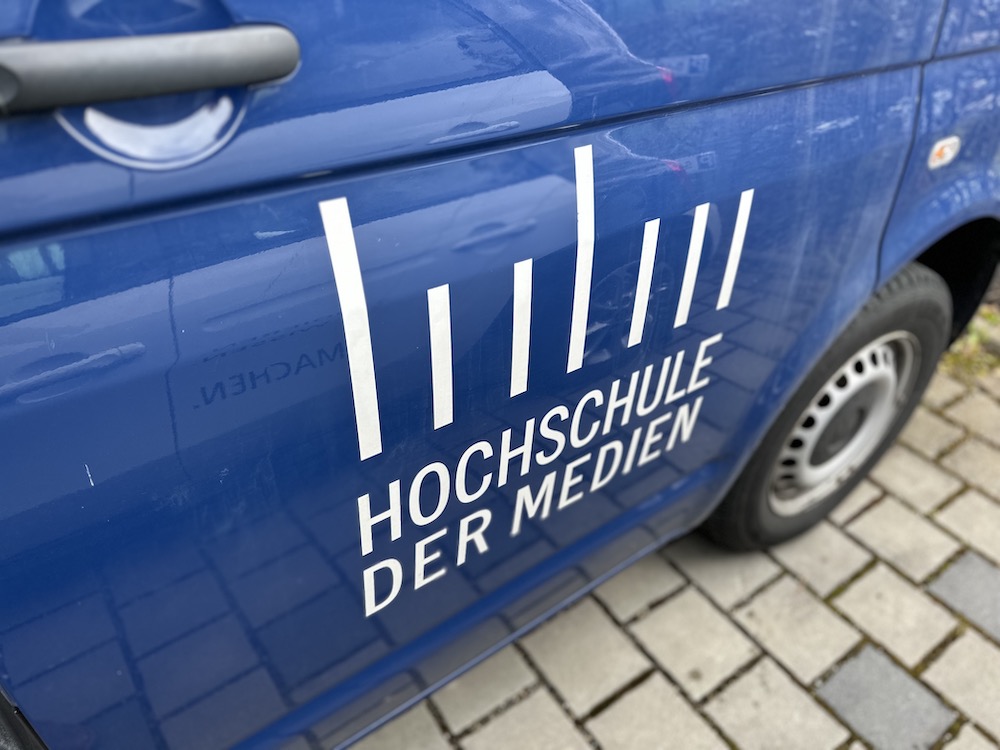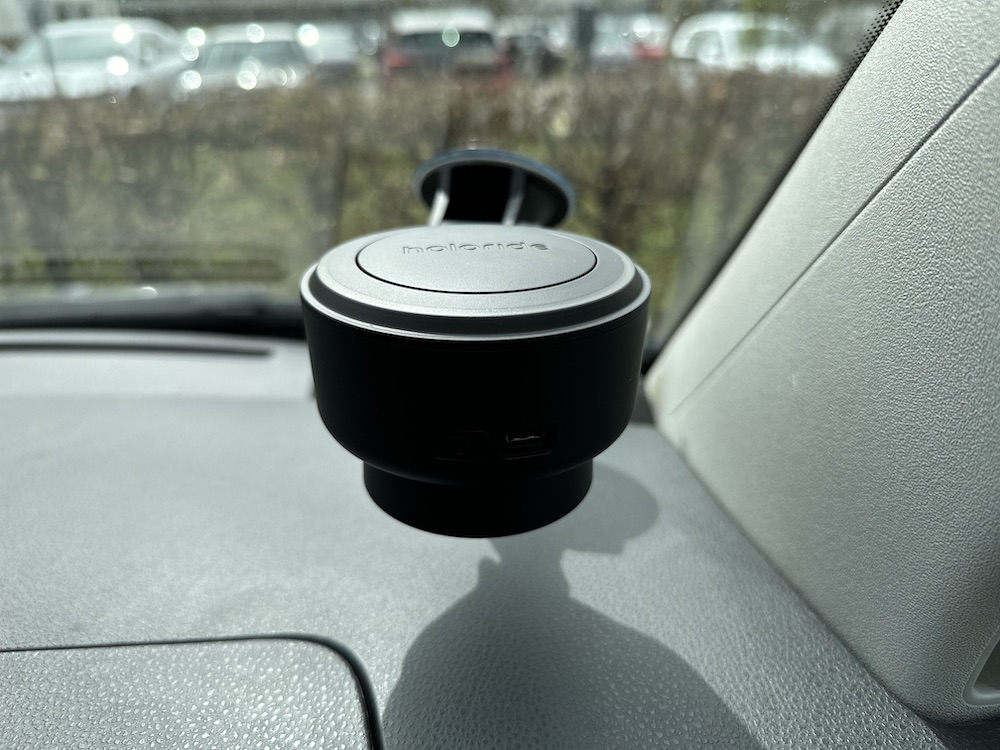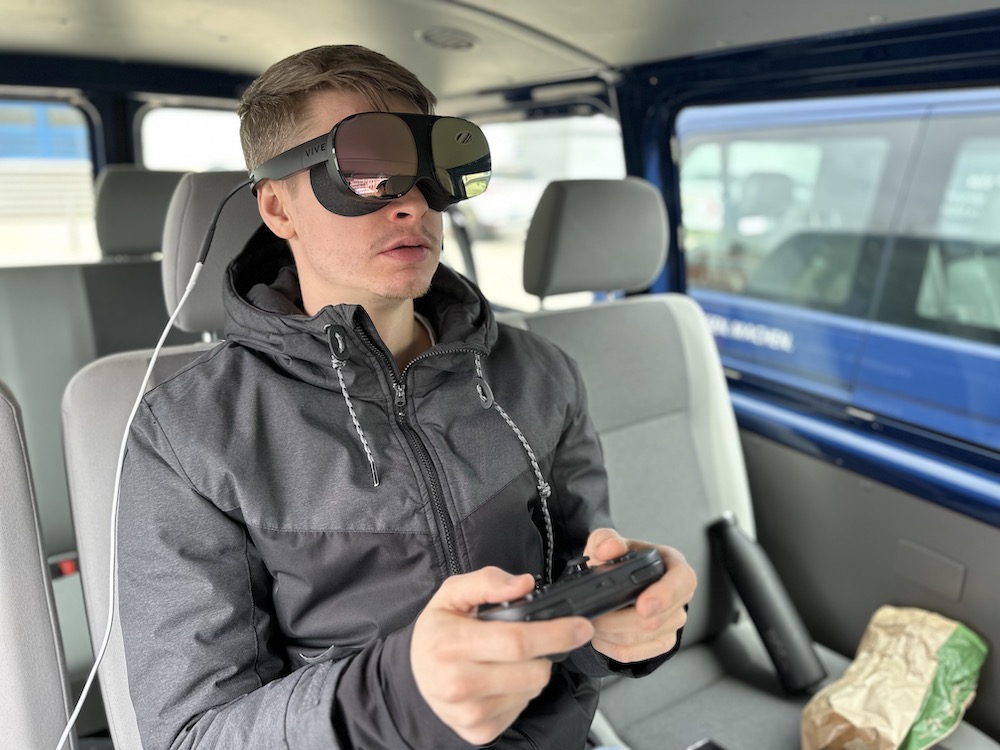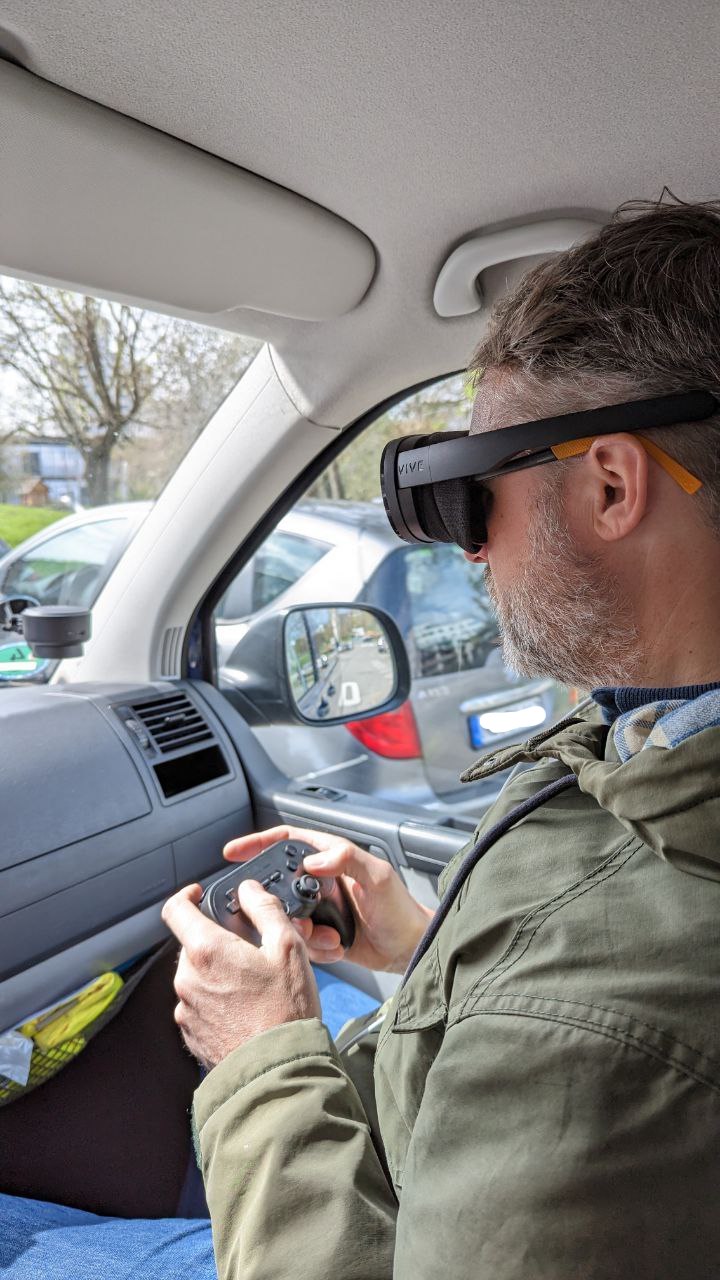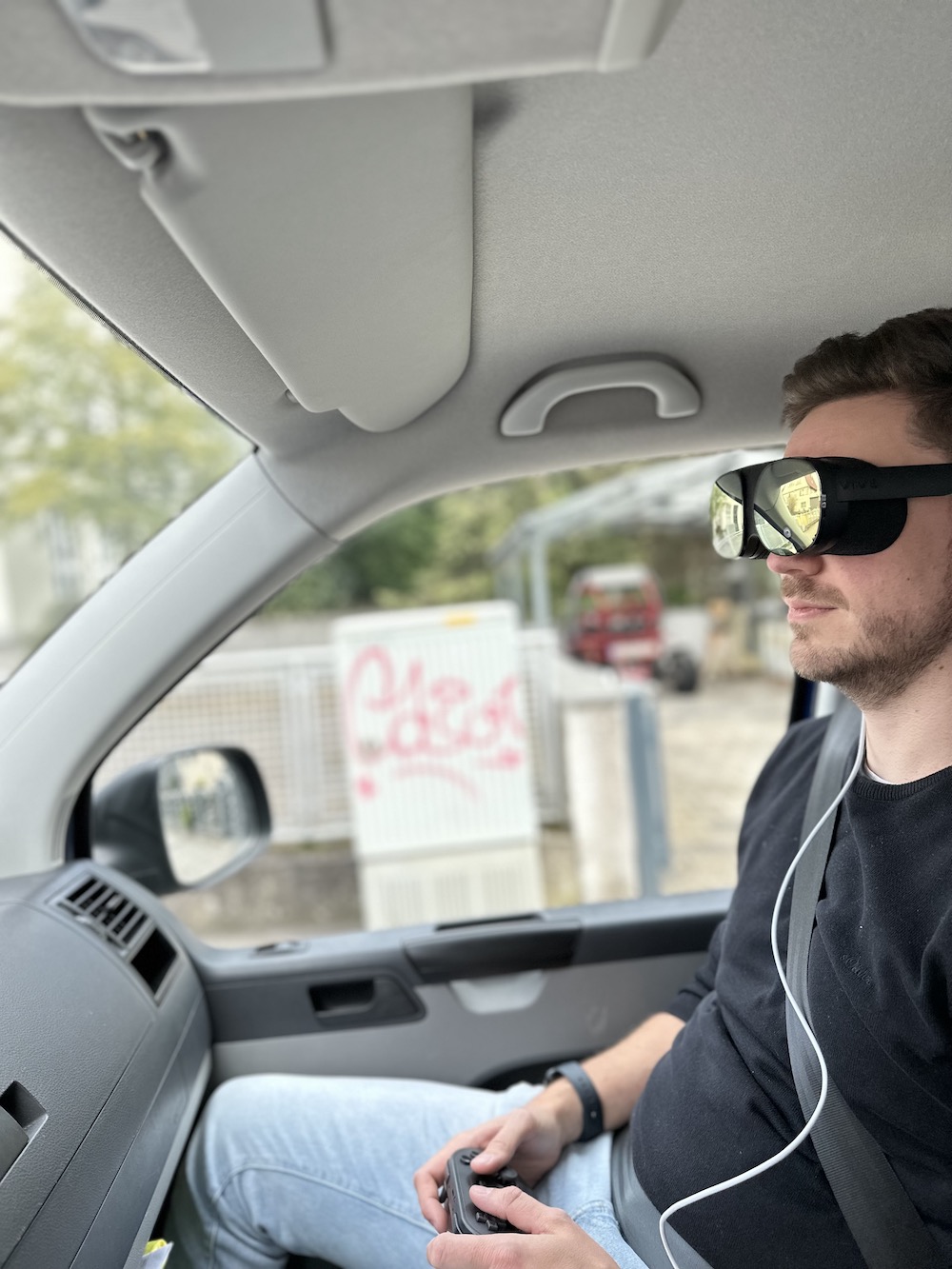
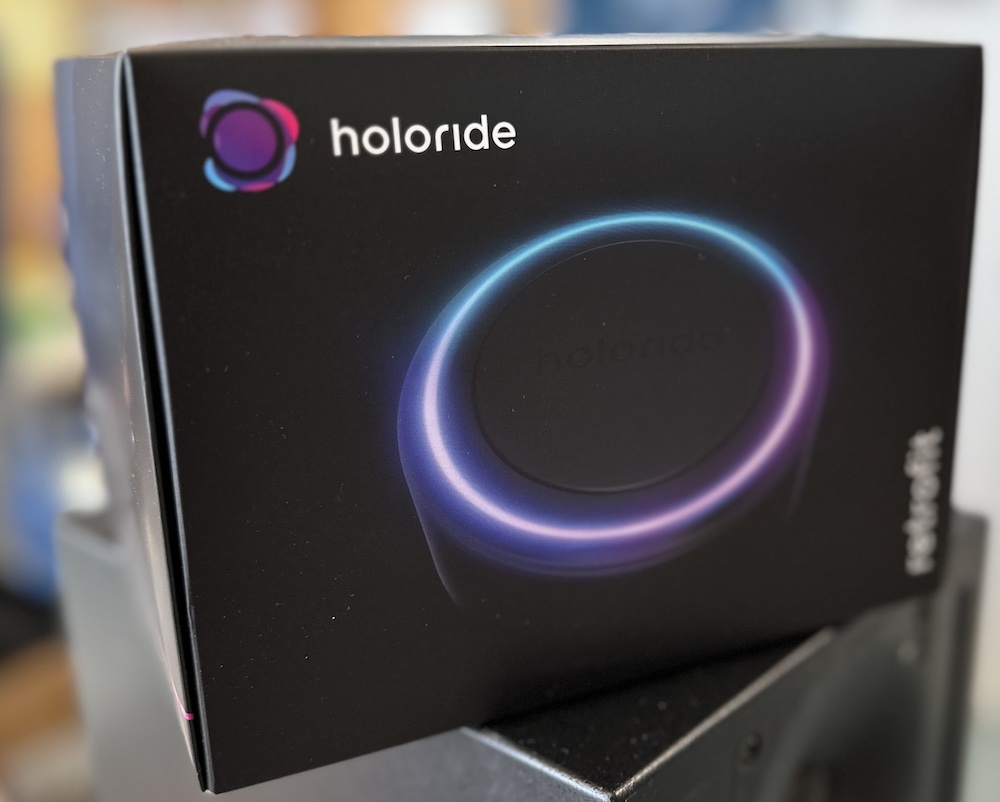
Last Monday, we had the opportunity to test the Holoride system on the university campus, and it was an interesting experience. Holoride is a new technology that synchronizes the movement of a vehicle with virtual reality content to create an immersive experience for passengers.
The test started with us wearing VR headsets while sitting in the backseat of a test vehicle. As soon as the vehicle started to move, the virtual reality experience began, and it felt like we were in a completely different world. The Holoride system uses the car’s movement data to adjust the VR content in real-time, creating a seamless experience that is synchronized with the vehicle’s movements.
We tested two different experiences during the test drive. The first one was a futuristic shooter game where we flew over a planet and had to fight against other flying enemies. The second experience was a racing game. Both games were quite enjoyable and the movements of the car were seamlessly integrated into the experience.
We were impressed by how the Holoride system eliminated motion sickness, which is a common problem with VR experiences. By synchronizing the virtual content with the car’s movements, it tricked our brains into thinking that we were moving naturally.
However, Tobias experienced motion sickness during the racing game, which highlights the need for further research and development to eliminate motion sickness in virtual reality experiences.
How Does Holoride Work?
Holoride works by using sensors in the little puck that is mounted to the windscreen of the car to track its movements and adjust the virtual reality content in real-time. The system is designed to work with any vehicle, in our case we used the universities van.
The Holoride system is powered by a software platform that can be integrated with any existing VR content. This means that developers can create new virtual reality experiences that are specifically designed for Holoride, or they can adapt existing VR content to work with the system.
What Will We Use It For?
One of the main benefits of Holoride is that it can make long car journeys more enjoyable for passengers. Instead of just staring out of the window or scrolling through social media, passengers can now immerse themselves in a virtual reality experience that is synchronized with the car’s movements. This can be particularly useful for families with young children who get bored on long car journeys. Holoride can keep children entertained and engaged, which can reduce stress for parents and make the journey more enjoyable for everyone.
Holoride can also be used to create new revenue streams for businesses. For example, hotels could offer Holoride experiences to guests who are travelling to their hotel. This could be a great way to differentiate themselves from other hotels and provide a unique and memorable experience for guests.
In 2016 I was working on a project with one of the major German automakers. We developed a gaming platform for in-vehicle games where we used Augmented Reality to visualize game content on the cars interior. At that time we also developed a prototype where we used an OBD-II dongle to access vehicle data such as acceleration, direction and others to use this for a little shooter game (see example video: https://cloud.mi.hdm-stuttgart.de/s/wBorGpn79FNgjRd). During the last years we developed multiple prototypes for automotive apps and games (see examples in this video: https://cloud.mi.hdm-stuttgart.de/s/cb8DHPNN9izwPKC). The main issue was to easily get access to the vehicle data. The data that is available via the OBD-II interface is usually very limited and the data that can be accessed via the car manufacturers APIs is also limited and/or not available in real-time (which is necessary for in car games). The holoride system could be a bridge technology for in-car gaming until the car manufacturers provide access to the in-vehicle sensors.
Now, we are planning to use the Holoride system to extend our Mixed-Reality driving simulator for autonomous driving (see: https://youtu.be/56dwwKiAdes) and bring it into a real car. This is really exciting and we can not wait until we can try it out.
The Future of Holoride
The potential for Holoride is enormous. Not only can it be used to enhance the travel experience, but it can also be used for training and education purposes. For example, Holoride could be used to train pilots or astronauts, or it could be used to provide virtual tours of historical landmarks.
We envision that Holoride will act as a bridge technology to bring gaming and VR/AR experiences to many vehicles. Not only cars but also buses, trains or even planes. The technology is fairly simple and it would not be required, if the car manufacturers could agree on standard interfaces for accessing in-vehicle sensors. The sensors are all already present in the vehicle. We will probably see more car manufacturer proprietary APIs and platforms. This is how the car-companies can differentiate. The once who provide the best experiences for their customers will win most users / customers. Thus, Holoride is a great way of bypassing a standardization process for the vehicle manufacturers.
Conclusion
The Holoride system is an incredible technology that has the potential to revolutionize the way we travel. It creates an immersive experience that is synchronized with the car’s movements, which can make long car journeys more enjoyable for passengers. While there are still challenges to overcome, such as motion sickness, the potential benefits of Holoride are enormous. We are excited to see what the future holds for Holoride or similar systems and how it will change the way we travel, learn, and experience the world around us.


